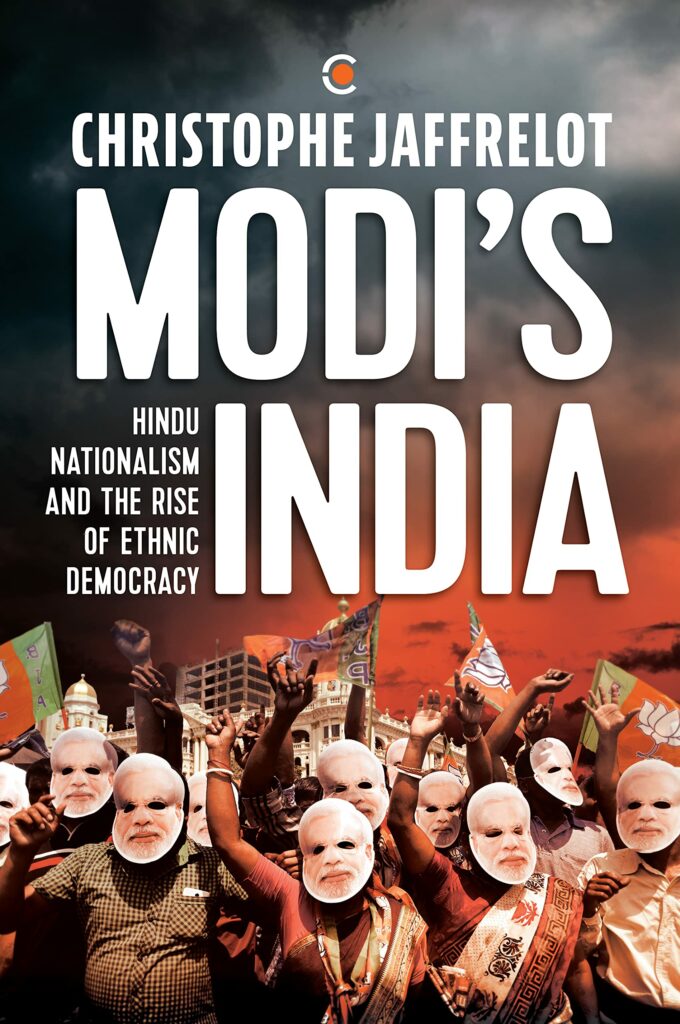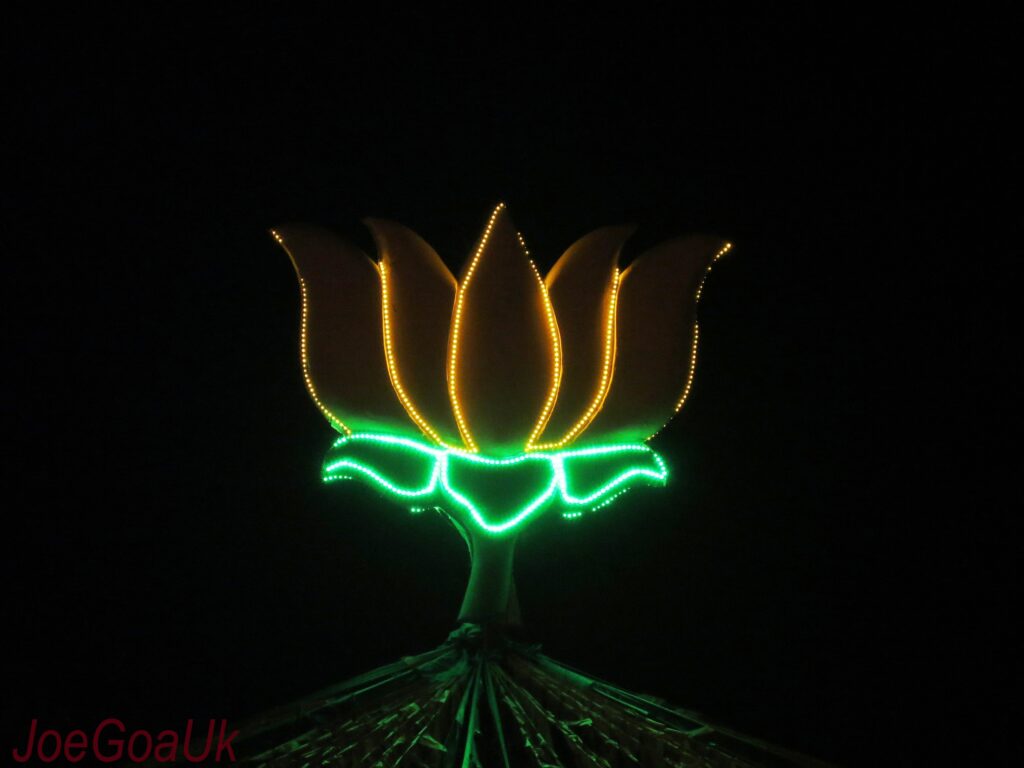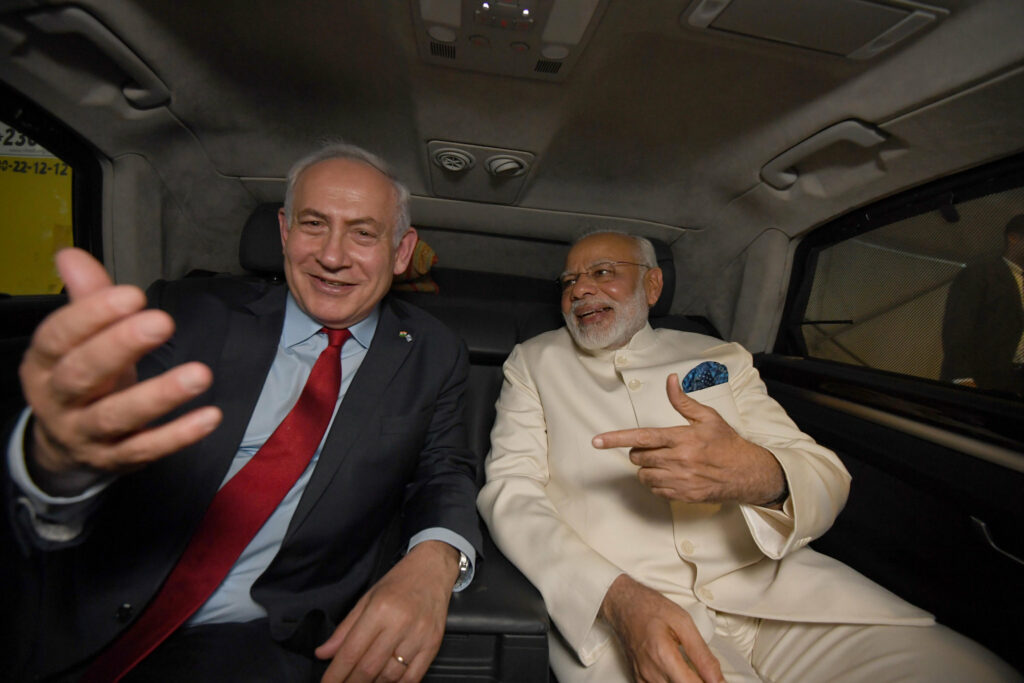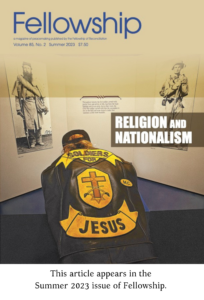In 2019, a few days after Indian Prime Minister Narendra Modi’s reelection victory, he appointed a 64-year-old ascetic named Pratap Chandra Sarangi to become his new Minister of State for Animal Husbandry, Dairying and Fisheries. Sarangi — a lifelong champion of rural schools — packed up his belongings and loaded them onto the back of a bicycle. As he was leaving his bamboo hut, a photographer took a photo of him, and it went viral.
Modi couldn’t have asked for a better image to symbolize the start of his second term. During his first term, from 2014 to 2019, he was criticized for failing to deliver economic development and for emboldening Hindu nationalists. He was also pilloried for cozying up to elites. To some, selecting Sarangi seemed like a course correction, a sort of throwback to the Indian politics of yesteryear and a return to the Gandhian ideals of simplicity and renunciation that Modi often champions.
But it’s not the full story.
In 1999, an Australian Christian missionary named Graham Staines and his two sons, aged 11 and seven, were burnt alive by the militant Hindu group Bajrang Dal in Sarangi’s home state of Odisha. Sarangi — an ardent Hindu nationalist — was the leader of the Bajrang Dal at the time. Although he was not charged in the killing, he has a long track record of spewing hatred against Christians. Soon after the Staines killing, Sarangi spoke of the “evil designs” of Christian missionaries who are, in his words, “bent on converting the whole of India.” He also faced a long list of other criminal charges, including intimidation, rioting and promoting enmity between religious groups.

In Christophe Jaffrelot’s new book “Modi’s India: Hindu Nationalism and the Rise of Ethnic Democracy,” he argues that promoting and enabling Hindu nationalists like Sarangi has always been Modi’s raison d’etre. Jaffrelot is a senior research fellow at Sciences Po in Paris, a professor of Indian politics and sociology in London, and the author of over 30 books on India. What distinguishes his work is that while some scholars are just now waking up to the dangers of Hindu nationalism, he has been writing about the topic for years. His first book, for example, “The Hindu Nationalist Movement in India and Indian Politics,” was published in 1995.
Jaffrelot’s latest is a referendum on Modi’s tenure as prime minister. The verdict? Well, as he told The New Yorker recently, “We are in an authoritarian regime where the man in charge (i.e., Modi) is supposed to rule forever.”
Readers old enough to remember 1982’s Oscar-winning biopic “Gandhi”— and I am one of them — might now be scratching their heads, wondering, “How could India go from being a radical experiment in religious unity and social cohesion to a state teetering on the edge of fascism?”
The challenge in answering that question is where to begin. Some would argue, with good reason, that India’s problems started with British colonial rule. According to a study by the economist Utsa Patnaik, Britain extracted a total of nearly $45 trillion from India during the period 1765 to 1938. The British also exacerbated existing tensions between Muslims and Hindus, including creating a separate electorate for Muslims in 1909. Others have pushed back on that argument, most notably the scholar Ajay Verghese, who argues that states ruled under the Indian princely system saw more Hindu-Muslim violence than those under the British Raj.
Historians often insist that India’s Hindu-Muslim fault line became irreversible after the partition. In 1947, the subcontinent split into a majority Hindu India and a majority Muslim Pakistan, which led to the death of over one million and the displacement of 15 million.
While no single factor or historical event can explain India’s communal malaise, Jaffrelot argues that the cleavages we see today are partly due to India’s period of economic liberalization in the early 1990s. This created a rapidly expanding, newly urbanized middle class who craved a sense of belonging, and wondered why the new, open economy was doing little to benefit them. Many found their answer in a previously unknown, fiery young Hindu nationalist named Narendra Damodardas Modi.
For most of its 70-plus-year history, India has been ruled by the Indian National Congress Party, and specifically, the Gandhi family (no relation to Mahatma Gandhi). While this dynasty gave India the socialist reforms of Jawaharlal Nehru, they also plundered the country under the draconian rule of Indira Gandhi. In the 1990s, their near-monopolistic grip on power began to slip with the rise of the Ram Janmabhoomi movement, a Hindu nationalist campaign that claimed the Mughals had built a mosque on top of the alleged birth site of the Hindu deity Lord Ram.
To bolster this movement, Hindu nationalists — Modi included — launched processions all across India, recruiting Hindus to destroy the 16th-century mosque. On Dec. 6, 1992, a crowd of around 150,000 descended on Ayodhya and tore the mosque down. A few years later, in 1996, Modi’s Hindu nationalist Bharatiya Janata Party, or BJP, came to power for the first time at the national level in India.
For most of India’s history, Hindu nationalism had been on the fringes of Indian politics. But Hindu nationalism has been in existence since the early 1900s, when early Hindu ideologues looked to European fascists, and Nazis in particular, for inspiration. In fact, Gandhi’s assassin, Nathuram Godse, was a member of the Rashtriya Swayamsevak Sangh, the militant Hindu nationalist group that Modi has been a part of since his youth. With the destruction of the Babri mosque, Hindu nationalists entered the mainstream. They also created an enemy around which they could mobilize — Muslims.
From 2011 to 2015, I lived and reported from India. When I interviewed Hindu nationalists, they would often insist that Muslims are 30 or even 50 percent of the population. Some even told me that Hindus will be outnumbered by Muslims one day. In actuality, Muslims are around 14 percent of the population; half of them live under the poverty line. Despite this, the BJP has managed to convince large swaths that India’s Muslims are outsiders and the real culprits responsible for India’s lack of progress vis-à-vis China and the West.
According to the Pew Research Center, by 2050 India will have more Muslims than any other country in the world, surpassing Indonesia. In fact, there will be just as many, if not more, Muslims in India than in the entire Middle East combined. And yet despite this, there is little outcry from the international community when Hindu politicians openly call for a genocide against Muslims.
Modi saw his profile rise with the destruction of the Babri mosque, but the national and international spotlight still evaded him. That all changed in 2002.
On Feb. 27, 2002, a train burned in Modi’s home state of Gujarat. The Hindus on board were returning from Ayodhya, where they were volunteering to build a temple to Lord Ram. After an altercation with Muslim vendors at a train station, two coaches caught on fire, resulting in the death of 59 Hindu men, women and children.

Modi had just become the chief minister of Gujarat. According to a testimony by a Gujarat police officer named Sanjiv Bhatt, Modi gave police officers strict orders on the evening of Feb. 27, 2002 to allow Hindus to do as they please to Muslims. (Bhatt was later thrown in jail by Modi.)
Within the first few days of the 2002 pogrom, 200,000 Muslims were displaced. Over 1,000 Muslims were killed, including a Muslim member of the Indian parliament, Ehsan Jafri, whose fingers were cut off and who was then paraded around his neighborhood atop a three-pronged sword before being burned alive in front of an ecstatic mob. Jafri made over 200 calls for help to officials and friends within the Gujarat government and Modi’s inner circle, but none responded.
I was working in Gujarat with an NGO when the violence broke out. At one relief camp I visited, thousands of Muslims were staying in an area about the size of a soccer field, with limited food, water and toilets. Most of those displaced were daily wage earners who make less than a dollar a day, but there were also judges, professors and physicians, all of whom were forced to flee when Hindus burned down their homes. According to a study by Harvard University, the Gujarat pogrom of 2002 resulted in an estimated $760 million in property damaged, almost all of which belonged to members of the Muslim community.
I was born and raised in California, and my American privilege granted me access to Hindu spaces in Gujarat that few Muslims had a chance to experience. In the all-Hindu neighborhood where I lived in 2002, life returned to normal for Hindus a few weeks after the Godhra train fire, with Hindu kids on my street often insisting that I take them to see the latest “Star Wars” film.
For Muslims, the violence lasted well into the summer. Muslims who tried to return to their jobs, their schools or their homes were often beaten up by Hindus. Hindu nationalists even called for an economic boycott of Muslims that was so effective it led to starvation among Muslims.
Over 20 years later, hundreds of mosques destroyed in 2002 have yet to be rebuilt, and thousands of Muslims still live in makeshift relief camps.
Many Indian and Indian-American liberals thought that voters would punish Modi for the violence. The opposite happened. In December 2002, a few months after the pogrom, Modi won with his biggest margin yet. It only confirmed what many Muslims in the relief camps told me: Modi is popular among Hindus not despite what he does to Muslims, but because of it.
Jaffrelot’s book alludes to these events, but its strength is that it begins much later, with Modi’s ascent to national power in 2014. Modi tried to reinvent himself as an economic maven after the pogrom. And he largely succeeded, thanks in part to expensive consulting firms he retained. He branded himself as a leader who could guarantee a paved road and a working toilet for every Indian.
Not only did Indians buy it, but so too did the international community. In 2015, former President Barack Obama praised Modi in Time magazine’s “100 Most Influential” issue, writing that Modi has “laid out an ambitious vision to reduce extreme poverty, improve education, empower women and girls, and unleash India’s true economic potential while confronting climate change.”

For those who romanticize India, reading Jaffrelot’s book is like having cold water thrown on your face. He argues that today, India is most analogous to Israel: an ethnic democracy that privileges one group above all others. Modi has achieved this by making millions of Hindus believe in the idea of a “Hindu nation.”
Hindu nationalism has largely been a North Indian, upper-caste project, but the genius of Modi is that he has made Hindus, regardless of their caste, feel is if they too can contribute to and be a part of a “Hindu nation.” Much of this is done by denigrating those who are not Hindu.
Today a Muslim can be, and has been, attacked for doing any of the following: falling in love with the wrong person (especially a Hindu), selling vegetables, eating meat, watching a movie, posting on Facebook, praying in public and praying at home.
Modi has no reason to curb this behavior because it has catapulted him to becoming the most popular leader in the world, with an approval rating of 76 percent. Jaffrelot explains that Modi’s charisma comes from the fact that he blends the traditional with the modern. One day Modi will be conducting a Hindu religious ceremony in a government building, while they next day he is meeting with young Indians to talk about the latest smart phone craze.
Despite Modi’s appeal, his Hindu nationalist BJP party has never gotten a majority of the vote in India’s first-past-the-post electoral system. The problem, Jaffrelot argues, is that India’s opposition is incapable and inept.
This summer, Biden and Modi will meet in Washington, D.C., but few are holding their breaths for the U.S. to say anything critical about Modi. As Politico reported, the policy from the Biden administration — and most U.S. administrations — has largely been “on India, say nothing.” This is unlikely to change anytime soon, partly because of India’s strategic importance to the U.S. and partly because Hindu nationalism doesn’t pose a threat to the international community the way Islamic fundamentalism does.
In 2024, Modi will face reelection and will likely win a third term. If he does so, he will probably try another trick — perhaps appointing another poor person or making an overture to a beleaguered minority.
This past Easter, Modi lit a candle at a church in India. Meanwhile, Christians in India have been attacked by Hindu nationalists for singing Christmas carols and for passing out Bibles — none of which has earned a rebuke from Modi. A decade ago, Modi lighting a candle at a church would have been met with applause. There is less applause today. And this, above all, is the best thing about Jaffrelot’s book: it is a reminder that the correct way to read Modi is with a skeptical eye.

